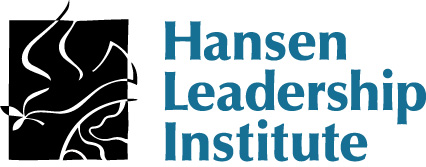Building bridges between East and West, past and future
Within Gulmira Shutanova’s young lifetime, her country has gone from a remote part of the former Soviet Union to an independent parliamentary democracy with dozens of national and cultural centers. Yet from any direction, a traveler approaching Gulmira’s home in Kazakhstan’s capital would pass through seemingly endless steppes with nothing else in sight. An occasional cluster of huts, a random yurt, a few cattle or perhaps a family of Saiga antelope or shaggy camels might break the monotony—or not. But eventually the city would appear on the horizon like something out of a science fiction movie. When Gulmira was a girl of ten, the Astana of today was not there. This new capital with its shining ultra-modern architecture now proclaims her country’s dream of the future, and Gulmira aims to help her country fulfill that promise.
She attends the Eurasian National University at Astana, majoring in foreign languages, though she could have just as easily pursued her interests in science and politics or her love of philosophy, psychology, and economics. Clearly, her strengths lie in the field of communication, and so she joined Orator, the debate club of her university, earning a winner’s certificate in the debate tournament held by the Regional Department of Education in Astana. Gulmira’s main passion, however, is the Congress of the Youth of Kazakhstan, the largest unified youth organization in the country. She’s excited to work toward achieving its goals of creating conditions for full development of youth prosperity in part by addressing unemployment, crime, and social problems. The Congress hopes to help increase the number of young people in business, increase job opportunities, and collaborate with other youth organizations internationally.
Gulmira worked hard within the Congress and soon became an assistant to the main manager. It was up to her to organize the festival for the “Week of Unity of Youth of Astana City.” This project taught her a great deal about the responsibilities of leadership and the importance of attention to details. She then became the project manager and has organized events concerning protection of human rights, conditions for youth participation in the social, economic, and cultural life of the country, and in support of the youth initiative. Through these activities, she had to work with people from vastly differing backgrounds, and she learned something about herself. Not only could she prioritize and cope with difficulties, she learned she could help participants form a common view of a problem, determine appropriate goals, and reach agreement.
A study of English, Chinese, and French seemed most helpful to Gulmira in working with different ethnic groups and immigrants within Kazakhstan but also with the increasing flow of international groups drawn to the new economic structures. With so much internal diversity Kazakhstan is still landlocked between two superpowers, Russia and China, and it also borders Uzbekistan, Kyrgyzstan, and the Caspian Sea—which has no connection to other bodies of water. Kazakhstan is rich in oil and other resources, but must have trade agreements to market them successfully.
In 2002, Kazakhstan had earned “market economy status” with the US, allowing the conversion of currency, a realistic means of determining wages, and opening the country to foreign investors among other benefits. More recently, a program was implemented called “Kazakhstan 2030,” focusing on prosperity, safety, general well-being, and aiming to rank among the top fifty countries for commerce, industry, stability and opportunity. Maintaining security is vital, and with so much hostility, separatist movements, and general volatility in the area, Kazakhstan will need young people like Gulmira. “A person is always given a choice in how to make life better,” she says, “on the one hand war, and on the other, peaceful solutions.” Gulmira hopes to help her country make the right choices to realize its potential as an international hub where East meets West.
